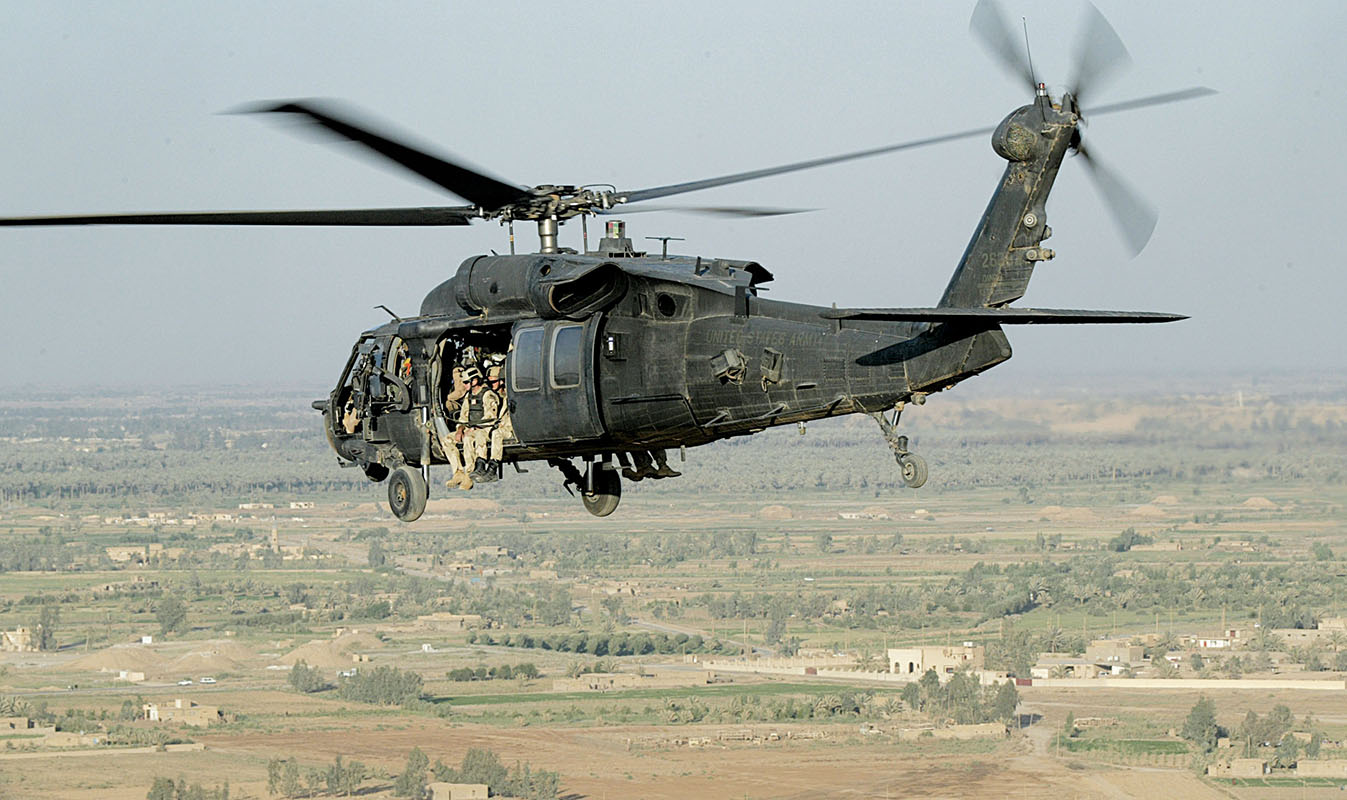NOTE
*USSOCOM PAO guidance on current operations dictate the use of pseudonyms for all SOF personnel, Major and below. In this article aircraft call signs, and the objective name are also pseudonyms.
DOWNLOAD
The recovery of an aircraft downed due to mechanical failure or enemy fire is a major event that tests the capacity any aviation unit. The Night Stalkers of the 160th Special Operations Aviation Regiment (SOAR) routinely fly missions deep into enemy territory where the recovery of a disabled helicopter is a high-risk endeavor. In November 2006, members of the 1st Battalion, 160th SOAR were forced to extract a downed aircraft in the midst of a ferocious firefight with insurgents deep in the Iraqi desert. The courage and professionalism of the Army Special Operations Forces (ARSOF) personnel, both on the ground and in the air, were instrumental in the successful recovery of the aircraft in the face of a determined enemy attack.
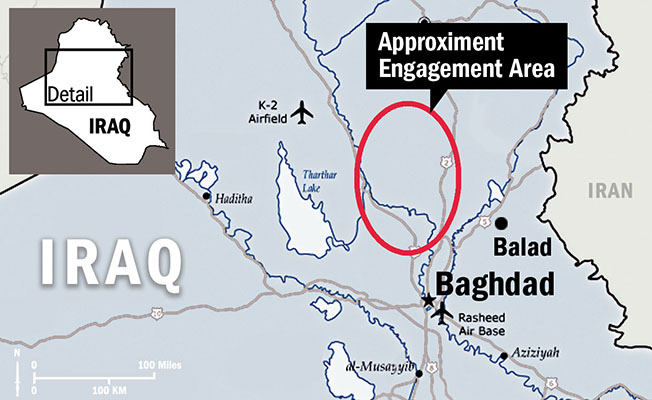
On 27 November 2006, elements of the 160th SOAR provided aviation support to ARSOF elements with a mission to interdict a high value target in a remote location in the vicinity of Lake Thar Thar, north of Baghdad, Iraq. The mission was to intercept the target vehicle and its passengers when it was in the vicinity of a building known as Objective DOMINION PINE*. The 160th SOAR assets in the task force were two AH-6 Little Bird gunships (call signs VALIANT* 41 and 42), two MH-6 Little Bird lift helicopters (GALAHAD* 71/72) each with two ARSOF soldiers on board, and two MH-60K Black Hawks (PALADIN* 65/66), each carrying 9 ARSOF troops of the ground assault element. The task force left Balad Air Base at 11:38 am local time on 27 November for the 65-mile flight to the objective.
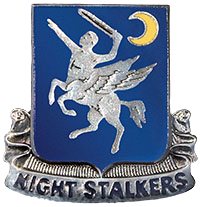
The Ground Force Commander (GFC) Major (MAJ) Dillon Teriault* determined that the best opportunity to intercept the target was when the vehicle and its occupants were moving away from Objective DOMINION PINE*. To accomplish this, Teriault decided to land the task force at a laager site about nine miles from the objective area and shut down the helicopters to conserve fuel.1 Reaching the laager site around 1200, MAJ Teriault discovered that the site was unsuitable due its close proximity to civilian buildings. “Since the plan was to shut down engines and prepare to wait for an extended period of time, we needed a more secure location,” noted Teriault.2 The two MH-60s had landed and at approximately 12:05 pm, the Black Hawks lifted off and joined the four Little Birds heading north to secure a better site. In the next five minutes, the situation would change drastically.
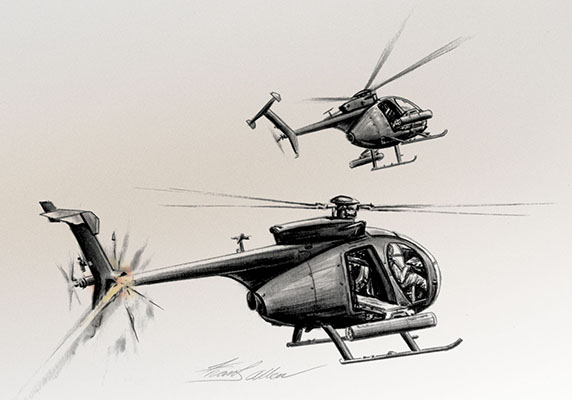

At 12:10, as the flight headed for the new location, the crew of the AH-6 VALIANT 42 felt a violent shuddering in the tail of the aircraft. Struck by a Rocket-Propelled Grenade (RPG), VALIANT 42 suffered a catastrophic tail rotor failure. Exceptionally skillful flying brought the aircraft down in the desert in a controlled crash. When the helicopter lost its tail rotor, it began to spin around beneath the rotors. Called “autorotating,” this occurs when the stabilizing influence of the tail rotor is lost.3 The Little Bird spun counter-clockwise several times before crashing onto the desert floor. The pilot Captain (CPT) Allen Filson* recalled, “We estimate [we made] four revolutions before we came to a stop, facing the direction we had just flown from. The right skid was torn off, the main rotor blades had imploded the Plexiglas canopy and we were resting on the right-side weapons system.”4 Gilson and his co-pilot Chief Warrant Officer 5 (CW5) Terry Pruitt* scrambled out of the wrecked helicopter. Both men were unhurt. The MH-60’s and MH-6’s quickly landed near the crashed Little Bird.
MAJ Teriault rapidly established a security perimeter around the crash site with the twenty-two ARSOF personnel from the other aircraft. The remaining AH-6, VALIANT 41, performed an airborne sweep of the area before landing near the crash site. Prudence dictated the Little Bird not remain aloft for long. “The reason we don’t stay airborne is these helicopters are what we call ‘Muj Magnets.’ If you start circling some place, the bad guys think something is up and they mass and come at you,” said CW5 David Cooper, the pilot of VALIANT 41.5 It was clear that the damaged helicopter would have to be evacuated back to Balad. This ended the mission to hit Objective DOMINION PINE.

MAJ Teriault directed that GALAHAD 65 and 66 return to Balad and bring back the Downed Aircraft Recovery Team (DART) to evacuate the aircraft. He kept eighteen of the ARSOF personnel for security at the site, releasing CPT Filson and CWO Pruit and the remaining four operators to return with the Black Hawks. At 12:32, the two MH-60s departed leaving the two MH-6’s and one AH-6 at the site. The estimated turn-around time was roughly thirty minutes. The Night Stalkers remained at the crash site to await the arrival of the recovery team.

Within the 160th SOAR, the Downed Aircraft Recovery Team is the key element when an aircraft must be recovered. Composed of highly trained aviation maintenance personnel, the DART functions in the same manner that a Quick Reaction Force (QRF) would for a ground combat operation, waiting in readiness to respond to a downed aircraft. Capable of performing extensive on-site repairs, the DART could, if required, sling-load the downed bird back to the base of operations. The teams often use innovative techniques under adverse conditions to accomplish their mission.
“We knew it would be a 30-minute turn-around time to get the DART there and we could shorten the time the DART spent on the ground by prepping the aircraft for sling loading operations,” said CWO Brad Furman* the pilot of GALAHAD 71.6 Furman and CWO Don Clemmons* boarded the side pods of the MH-6 GALAHAD 71 and flew off to comb the area for pieces of the downed helicopter. After a quick search, the pilots returned and began preparing the AH-6 for the sling load. With only a multi-purpose wrench and parts of the aircraft for tools, the pilots secured the loose pieces prior to the extraction.7 While they worked, the security situation suddenly deteriorated.
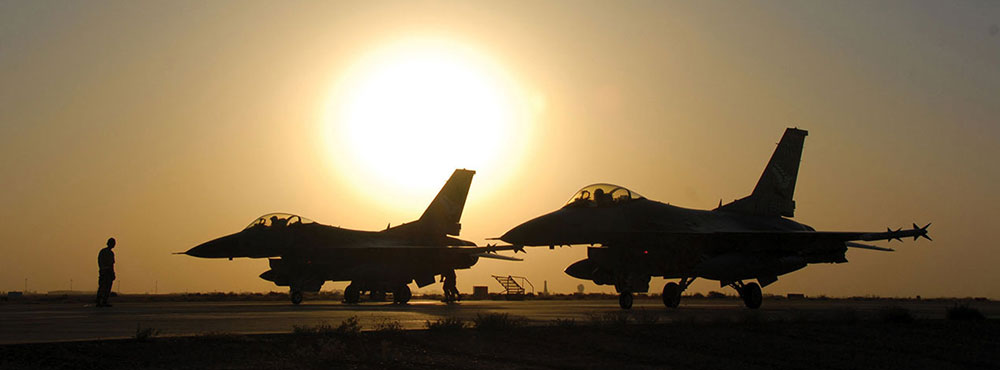
With the ARSOF team was a Combat Controller Technician (CCT), U.S. Air Force Master Sergeant (MSgt) Avery Alsup*. In the area of the operation was an Air Force Intelligence Surveillance Reconnaissance (ISR) aircraft (call sign DRAGON* 93) and two U.S. Air Force F-16 Fighting Falcons (HELLCAT 55 and 56) to provide close air support. “DRAGON 93 was pushed over the VALIANT 42 crash site and I passed the HELLCATs the location. I wanted to make sure they had good situational awareness in case something developed,” said MSgt Alsup.8 As events unfolded, this proved to be a wise decision.
At 12:50 pm, ARSOF personnel manning the eastern part of the perimeter reported vehicles mounting weapons approaching from the south. “We initially believed them to be Iraqi Police or Iraqi Army based on the overt nature of their driving up on our position,” said MAJ Teriault.9 This misconception soon vanished when RPG and small arms fire began to rain in on the ARSOF position as the trucks drove to within 800 meters of the perimeter. MSgt Alsup called in HELLCAT 56 (HELLCAT 55 had left for aerial refueling), to engage the advancing enemy and CW5 David Cooper and his co-pilot CWO Cory Carnival* scrambled into their AH-6, VALIANT 41, to join the fight. At the crash site, the four MH-6 pilots hastened to remove ammunition and fuel from the downed AH-6.


